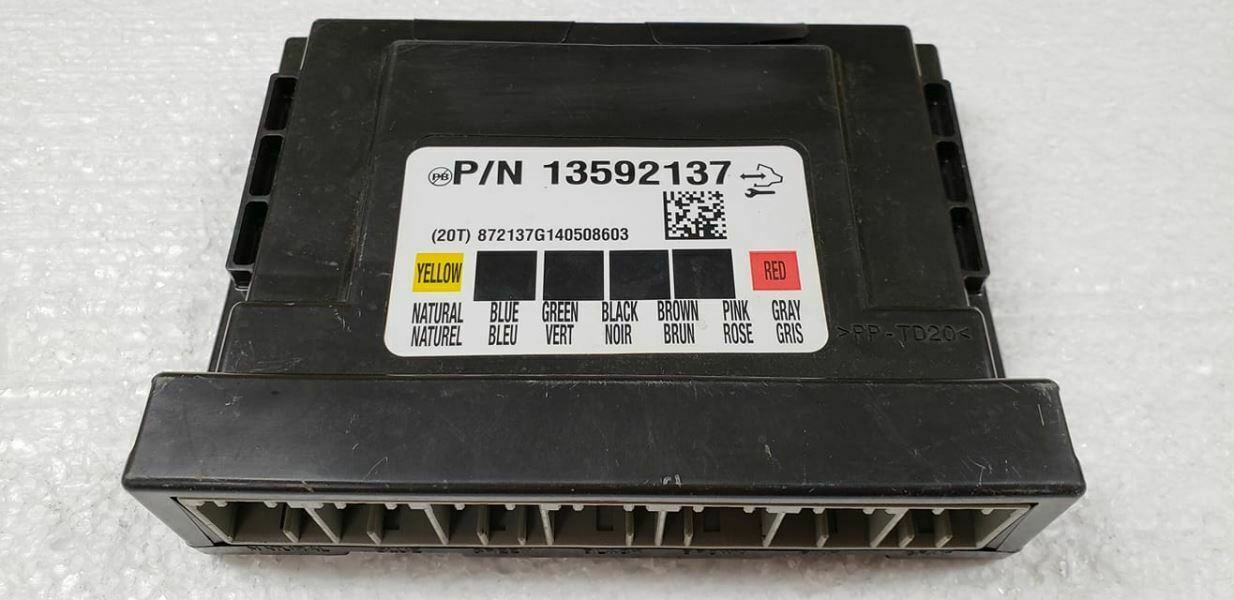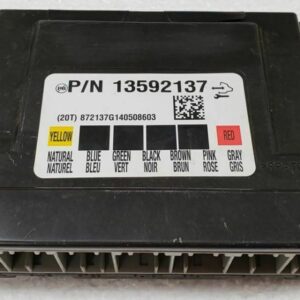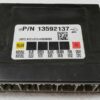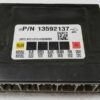Tired of Electrical Gremlins in Your 2015 Chevy Tahoe?
As a technician with over two decades of experience, I’ve seen firsthand how a failing Body Control Module (BCM) can turn a reliable vehicle into a source of constant frustration. Are your lights flickering for no reason? Do the power windows and locks have a mind of their own? Is your security system preventing the truck from starting? These aren’t random quirks; they’re classic signs of a BCM breakdown. The 2015 Tahoe BCM is the central nervous system for your vehicle’s body electronics, and when it fails, chaos ensues.
Forget the dealership headache and exorbitant programming fees. We offer a straightforward, reliable solution: a replacement BCM that arrives at your door fully programmed and ready to install. This is achieved through our simple cloning service. After your purchase, you’ll ship your original BCM to us. We then transfer all the critical vehicle-specific data—including VIN, mileage, and security information—to this replacement module. The result is a true plug-and-play part that restores function without needing a trip to the dealer for expensive software flashing.
A Technician’s Notebook: The Intermittent Tahoe
I remember a 2015 Tahoe that came into the shop with the most baffling symptoms. The customer reported that sometimes the radio would shut off, the dome lights wouldn’t work, and occasionally the turn signals would stop flashing. We couldn’t replicate it consistently. After checking grounds and wiring harnesses for hours, we finally caught a communication drop from the BCM on the scan tool. A new, unprogrammed module would have meant towing it to the dealer. Instead, we used a cloned module just like this one. The swap took 20 minutes, and every single issue was resolved instantly. This service saves hours of diagnostic and programming time, making it the smartest fix.
Common Signs of a Failing BCM
If your vehicle is acting up, cross-reference your issues with this list. A faulty BCM is often the culprit behind these perplexing problems.
- ✔ Erratic or non-functional interior and exterior lights (headlights, tail lights, dome lights).
- ✔ Power windows, door locks, or mirrors working intermittently or not at all.
- ✔ The security system or anti-theft light flashing, causing a no-start condition.
- ✔ Inaccurate or dead gauges on the instrument cluster.
- ✔ Dashboard warning lights for ABS, Airbag, or Traction Control illuminating.
- ✔ Communication error codes, often in the U-series (e.g., U0140, U0155), indicating a loss of communication with other modules.
A Straightforward Guide to Installation
Installing your pre-programmed 2015 Tahoe BCM is a job most DIYers can handle with basic tools. The module is typically located under the steering column.
- Safety First: Always disconnect the negative terminal from your vehicle’s battery and wait a few minutes before beginning work.
- Locate the BCM: On the 2015 Tahoe, find the BCM mounted under the driver’s side of the dashboard, near the steering column. You may need to remove a lower dash panel for access.
- Disconnect and Remove: Carefully unplug the electrical connectors from the old BCM. They have locking tabs that must be depressed. Once disconnected, unbolt or unclip the module from its mounting bracket.
- Install the New Module: Mount your new, pre-programmed BCM in the same location and securely reconnect all electrical connectors. Ensure they click into place.
- Final Steps: Reinstall any trim panels you removed and reconnect the negative battery terminal. Start the vehicle to confirm that the primary issues are resolved.
Important Post-Installation Note: In some cases, additional relearn procedures may be required. If the airbag light is on, a professional scan tool is needed to perform the ‘Setup SDM Primary Key in BCM’ procedure. A ‘Brake Pedal Position Relearn’ may also be necessary for proper brake light and stability control function. Always consult a service manual for vehicle-specific instructions.
Will This Fit My Vehicle?
This BCM is a direct-fit replacement for a wide range of 2015-2018 GM vehicles. Please verify your part number (found on your original module’s sticker) against our list. This module is compatible with part numbers 13592137, 13506935, 13506936, 13587704, and 13594764.
- ATS (2015-2016)
- Corvette (2015)
- CTS (2015-2016)
- Escalade & Escalade ESV (2015)
- Impala (2015-2016)
- Silverado 1500, 2500, 3500 (2015)
- Sierra 1500, 2500, 3500 & Denali Models (2015)
- Sonic (2015-2018)
- Suburban 1500 (2015)
- Tahoe (2015)
- XTS (2015)
- Yukon & Yukon XL 1500 (2015)
Frequently Asked Questions About Our BCM Service
How does the programming service work?
How does the programming service work?
It’s simple. After you place your order, we will contact you with instructions to ship your original BCM to us. Once we receive it, we extract the unique data and flash it onto the replacement module. We then ship the plug-and-play replacement back to you, typically within 1-2 business days of receiving your original.
Do I need to send my original BCM?
Yes. To make this a true plug-and-play solution that works with your existing keys and security system, we must clone the data from your original module. This process saves you hundreds of dollars in dealer programming fees.
Is there a core charge?
No, there is no core charge for this service. You are welcome to keep your original, non-functional module after you send it to us for the initial data transfer.
What if my airbag light comes on after installation?
This can happen occasionally. It means the new BCM needs to be synced with the airbag system’s Supplemental Deployment Module (SDM). A repair shop with a professional-grade scan tool can perform the ‘Setup SDM Primary Key in BCM’ procedure to resolve this.
Is this a difficult part for a DIYer to replace?
For most of the listed vehicles, like the 2015 Tahoe BCM, the physical replacement is straightforward and requires only basic hand tools. It’s typically located under the dash and is accessible after removing a trim panel. The real value is that our programming service eliminates the most difficult part: the software configuration.



